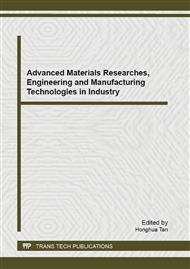p.106
p.111
p.118
p.122
p.127
p.131
p.138
p.143
p.148
Compressive Strength Prediction of T300/QY8911 Composite Subjected to Moisture and Temperature Environment Condition
Abstract:
The purpose of this study is to investigate the effect of moisture and temperature on the compressive strength of T300/QY8911 composites that tend to be used as structural parts of aircrafts. In aeronautical applications, the composites are exposed to severe environmental conditions, and it is known that hot and humid environments can degrade some aspects of the material performance especially the compressive strength. In this paper, an experimental study was carried out to determine the damage progressions. Scanning electron microscope (SEM) was also employed for fractographic investigations. It is observed that the failure of specimens tested in hot and wet conditions always occurs as a result of out-of-plane microbuckling that is attributed to the reduction of matrix strength. Fiber microbuckling model, fiber kinking model and combined model were employed for the compressive strength prediction of the unidirectional T300/QY8911 composites subjected to different environment conditions. Results show that the combined model is more suitable for the compressive strength prediction of T300/QY8911 composite systems when suffering severe environment conditions.
Info:
Periodical:
Pages:
127-130
Citation:
Online since:
September 2013
Authors:
Keywords:
Price:
Сopyright:
© 2013 Trans Tech Publications Ltd. All Rights Reserved
Share:
Citation:


